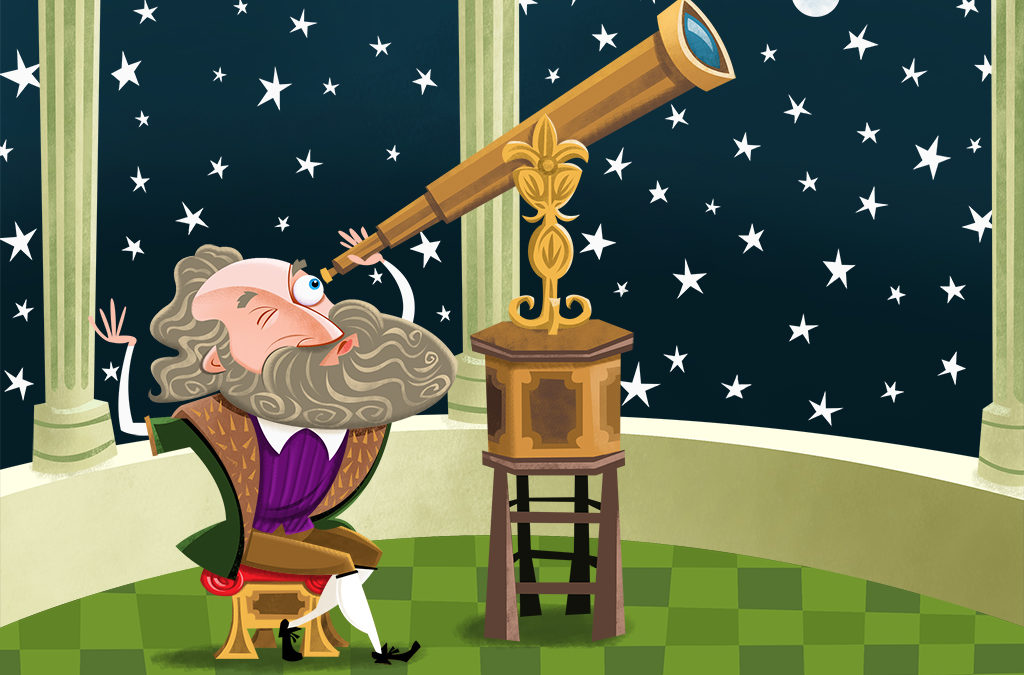I’m in an astronomical mood once again. Some time ago, earlier this year, I drew Astronomy Girl, that big-headed kid gazing up at the stars. That was followed by last month’s Corn Moon, the big orange moon waking from a daytime sleep to light up the night. Today it’s Galileo.
I’m currently reading Galileo’s Daughter, A Historical Memoir of Science, Faith, and Love by Dava Sobel. Ms. Sobel has also written A More Perfect Heaven: How Copernicus Revolutionized the Cosmos. Galileo’s Daughter was nominated for the 2000 Pulitzer Prize for Biography or Autobiography. As many of you know, I started my professional art career at The McDonnell Planetarium in St. Louis, MO. Astronomy was the class I took to satisfy my college Fine Art curriculum’s science requirement. I’m no expert in the field, but it would easily be my favorite science subject.
Most things I create have a nod toward children’s books or curriculum. Those have been my bread and butter over the years. I can still recall the images that made an impact on me as a kid, and I hope my work leaves memorable impressions. Some of the things that grabbed my juvenile, and somewhat short, attention was the way shapes interacted in a picture. Negative space (a misnomer, as no part of an illustration is “negative”) usually has the most fun, surprising bits of visual info. A random triangle, or an organic blob that grows between the main features are a lot of fun for me.
Thanks for taking a look at Galileo, or www.edkoehler.com. If I can be of service, I assure you, I’ll shoot for the stars.


Had to laugh. I also took Astronomy in college. It was a difficult course due to all the physics. Whew! Well, I passed, but I thought I’d only be studying the heavens when I signed up!
Hah. I’m the least scientific person I know. My first art job, however, was at the planetarium, which started as a work/study program. Growing up during the space program, with the moon landing just as I was going into high school, and all that, I got interested in it enough to grab it as my necessary science. I probably didn’t know the physics was physics, and it was probably more introductory. I got to know the sky pretty well, because after working as an artist by day, I worked as a Star Show tech by night, pointing out the constellations, planets, working the control panel for the shows. It was a blast. Astronomy was the only science course for which I ever received a respectable grade. Thanks for reading, Mary Anne!